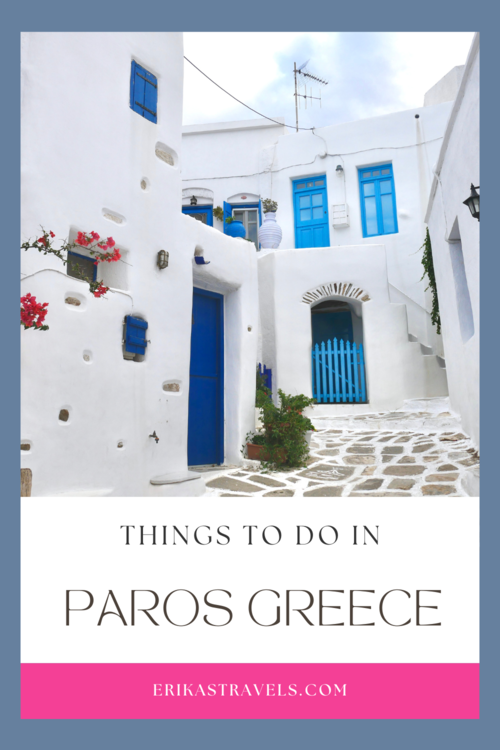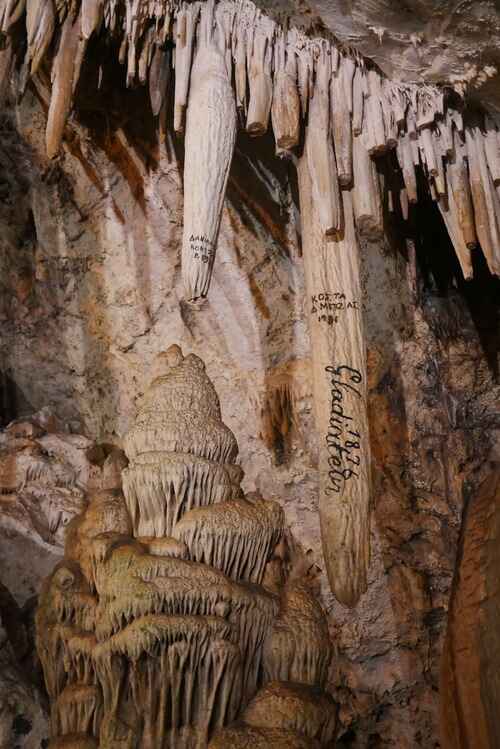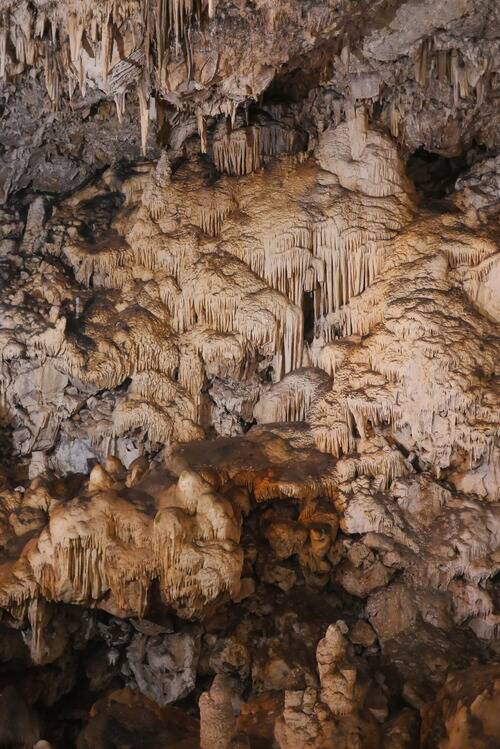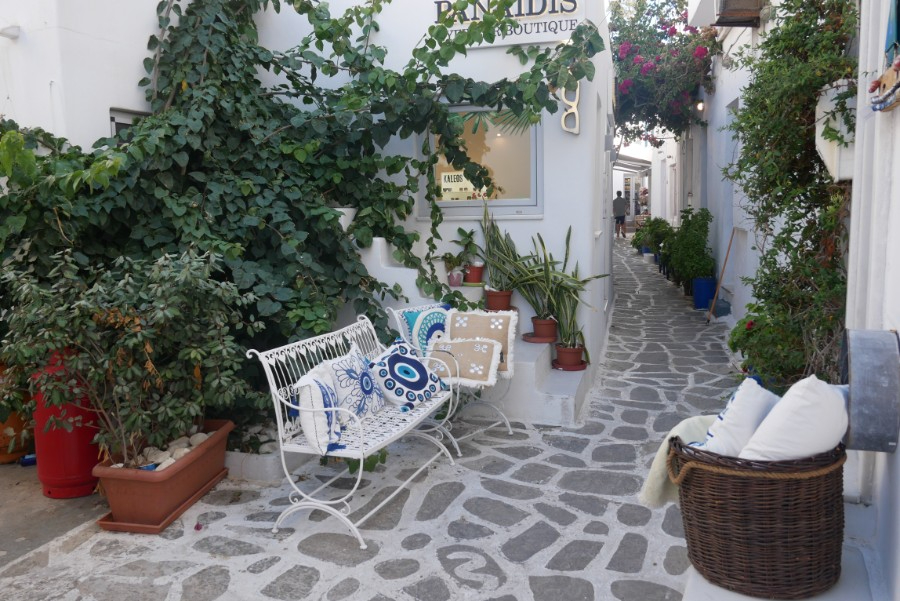
Guide to Paros and Antiparos, Greece
The idyllic island of Paros—awarded best in Europe by Travel and Leisure in both 2018 and 2020—seems to have it all. The pretty Greek island has managed to strike a balance between easygoing and bustling, rustic and cosmopolitan, amenity-filled and affordable. It blends laid-back sophistication with unspoiled Cycladic beauty.
Though certainly not off the beaten path, Paros often takes a backseat to the more popular islands of Mykonos and Santorini.
As such, the island remains enticing in its beauty, yet still shielded somewhat from influencer fame.
PAROS ISLAND: THINGS TO DO AND SEE
Paros, the second largest island in the Cyclades, sits centrally located between many of Greece’s most alluring destinations. Frommer’s Guide dubs it the “Transportation Island” and calls it “a place to go on the way to the place you’re going.” But I think that depiction sells Paros short.
And judging by the thriving-yet-manageable tourism scene on the island, I think others probably agree.
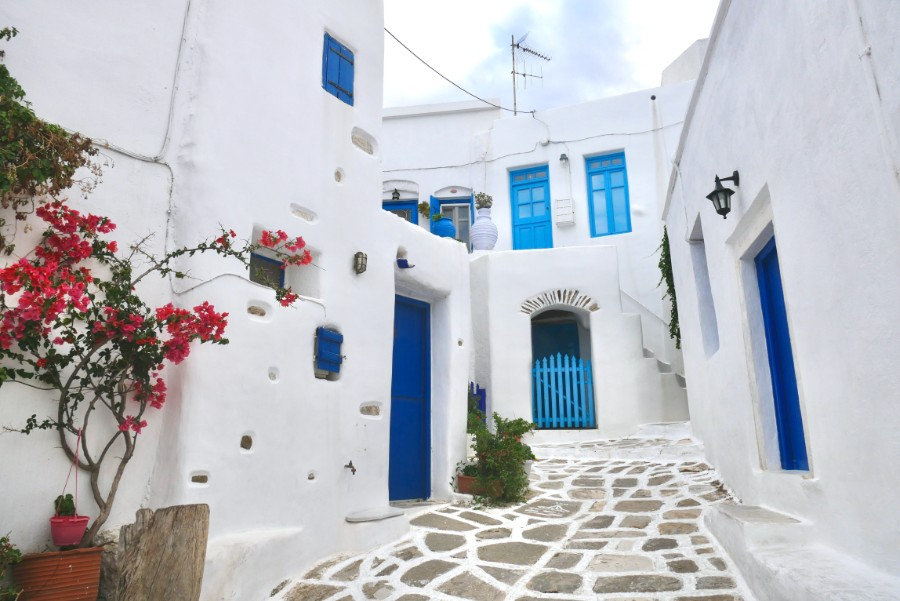
Paros isn’t only a poor man’s Mykonos or Santorini. The island has its own noteworthy attractions, its own relaxed atmosphere, and its own reasons for landing a spot on Greek island-hopping itineraries.
PARIKIA
Parikia is the largest city in Paros and the island’s main transportation hub. It is also the base from which my family and I explored the area during our three day visit.
Parikia is home to winding cobbled lanes, photogenic alleyways and colorful doors. Its chalk-white homes and neoclassical mansions showcase architecture that is quintessentially Cycladic. The city boasts souvenir shops, lively cafes, quiet residential corners and striking sunset views from its waterfront.
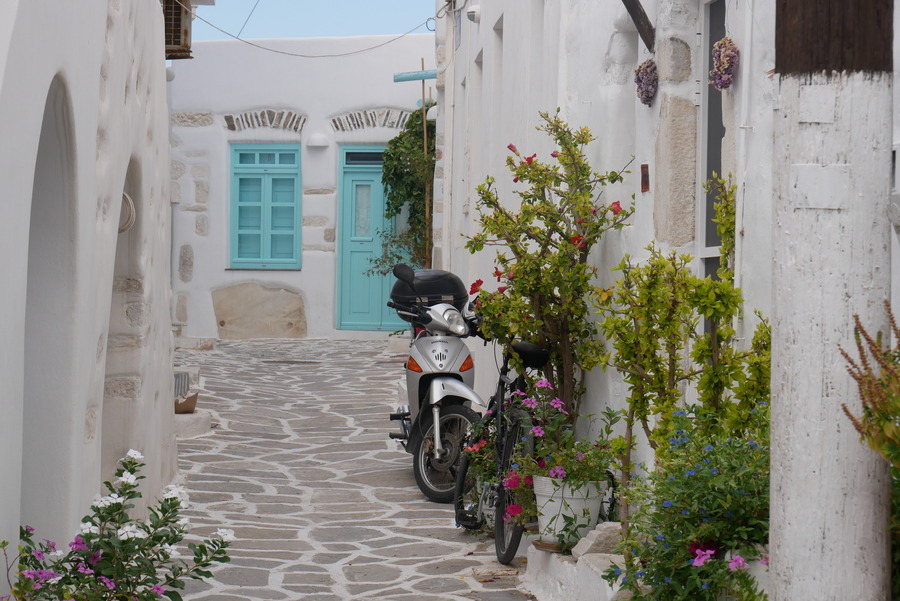
As the island’s main harbor and commercial hub, Parikia contains some of Paros’ most important landmarks—including Panagia Ekatontapiliani and the Frankish Castle ruins.
-
CHURCH OF PANAGIA EKATONTAPILIANI
The church of Panagia Ekatontapiliani lies near the port of Parikia. It is one of the best-preserved Paleo-Christian monuments in Greece.
According to the the island’s folklore, Saint Helene vowed to build a church on Paros when a storm left her stranded en-route to the Holy Land. Her son, the Roman emperor Constantine, later fulfilled her wish by constructing the magnificent Panagia Ekatontapiliani.
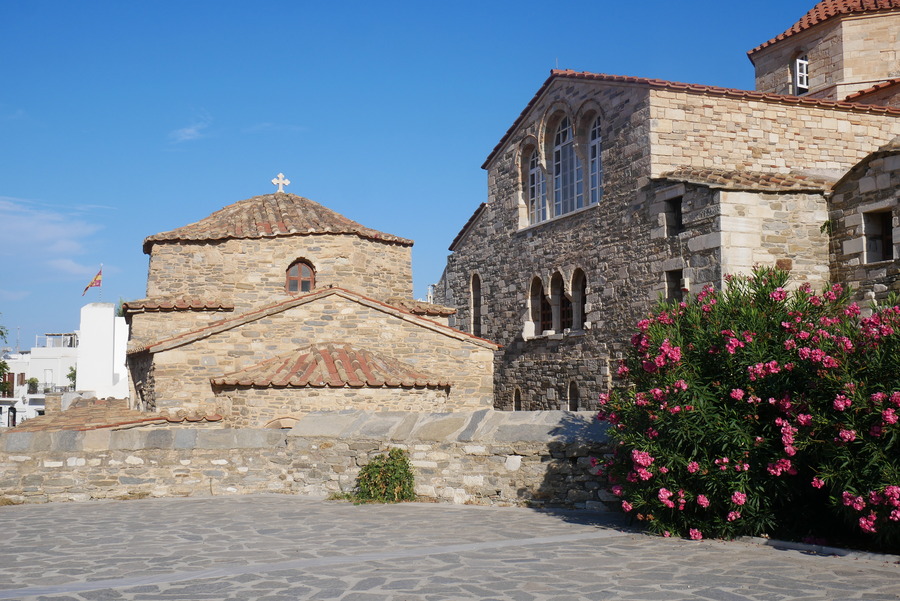
The original church dates back to the 4th century AD. In the 6th century, the Byzantine Emperor Justinian added the church’s dome. Subsequent additions to the church have taken place throughout history.
Today, Panagia Ekatontapiliani contains an amalgam of Paleochristian, Byzantine and post-Byzantine elements. Some of its marble stonework comes from remnants of the island’s ancient temples.
The name Ekatontapiliani means the Church with the Hundred Doors. Legend has it that the church contains 99 doors, plus a secret hidden door. It is believed that the hundredth door will open when the church of Hagia Sofia in Istanbul becomes Orthodox again.
-
FRANKISH CASTLE
The remains of the Frankish Castle lie tucked away in the winding narrow lanes of Parikia. The fort, built by the ruling Venetians in the Byzantine era, was constructed using remnants of temples that date back to the 6th century BC.
Not much remains of the castle, but its unusual construction is worth seeing when in Paros.
NOUASSA
Bustling Nouassa is Paros’ most popular tourist attraction. The town is one of the prettiest in the Cyclades. Its charming harbor features a half-sunken Venetian castle and a lively pier.
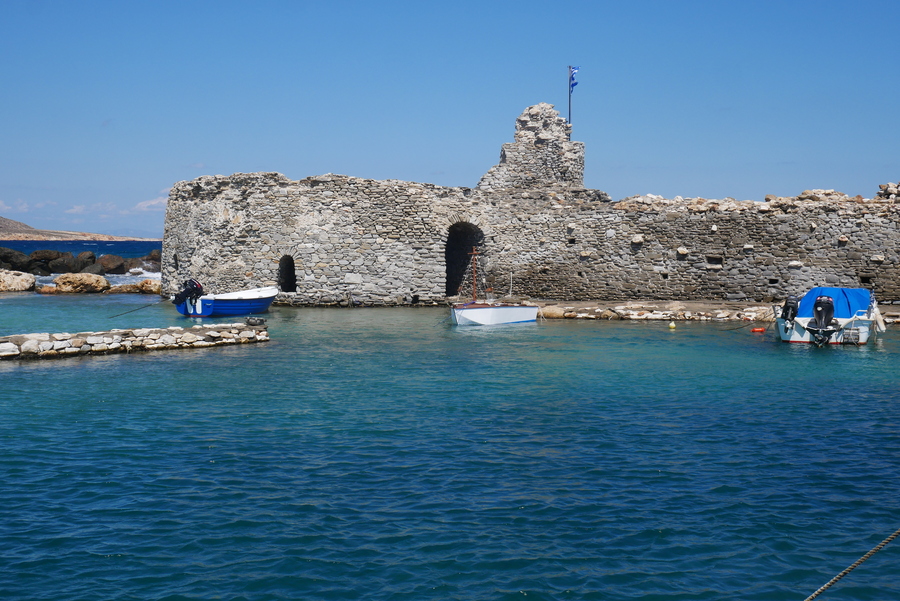
Inside the village, crisscrossing cobblestone lanes overflow with eateries, cafes, boutiques, and bougainvillea-clad Cycladic homes. Tiny churches lie tucked away in quiet alleyways, just a stone’s throw away from the town’s picturesque boat-speckled harbor. Along Nouassa’s frenzied waterfront, restaurant tables vie for the best views of the sea.
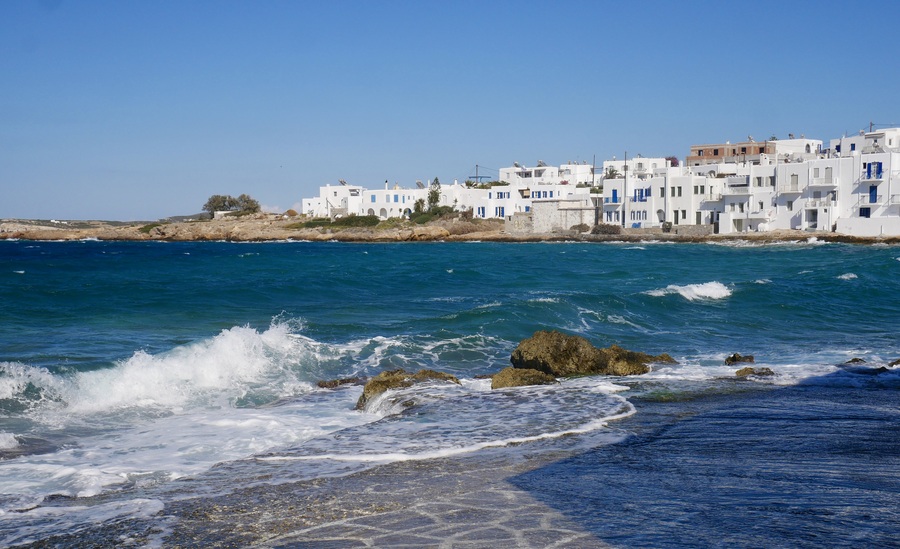
With Nouassa’s nearby sandy beaches, its plethora of tasty eateries, its chic boutiques and its ubiquitous beauty, it is easy to see why the city lands a top spot on many Paros to-do lists. Nouassa is a wonderful place to spend an afternoon, as well as a great base from which to explore the island.
LEFKES
Postcard-perfect Lefkes is the highest mountain village in Paros. Located near the center of the island, it offers sweeping panoramic views of the Parian countryside and shimmering Aegean.
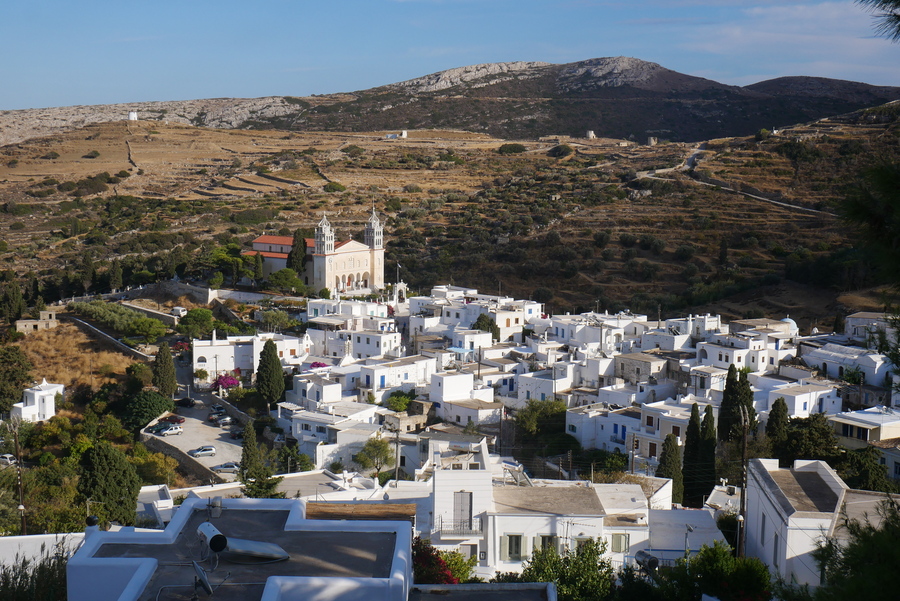
During the Middle Ages, Lefkes was the island’s capital and richest city. Echoes of its past can be seen in its architecture. The town contains a the blend of Venetian, neoclassical, and Cycladic buildings that date back to the 15th century.
The Church of Agia Trigada, built in 1830, is the most prominent landmark in Lefkes. It looms over the surrounding countryside and is the centerpiece of Lefkes’ townscape.
OTHER NOTABLE TOWNS IN PAROS
Lefkes may be the most notable town in Paros’ interior, but it is certainly not the only one worth visiting. Travelers seeking to enjoy more off-the-beaten path communities may want to check out the quaint villages of Marpissa, Prodromos, Kostos and Piso Livadi.
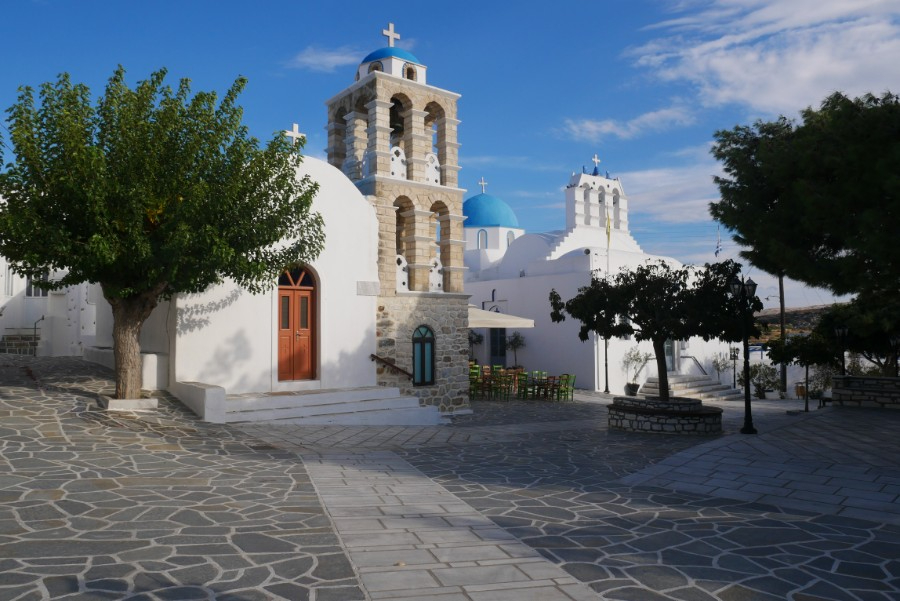
With the exception of Kostos, we didn’t have the opportunity to stroll Paros’ other picturesque villages.
Since we were traveling with our 9 month old baby, we had to juggle our sightseeing desires with time constraints and nap schedules.
PAROS PARK
Paros Park lies along the island’s northern reaches. It is a protected natural reserve that takes up the northern tip of the Agios Ioannis Detis Peninsula.
Paros Park is among the island’s top tourist attractions and a must-see for anyone seeking a slice of unspoiled scenery.
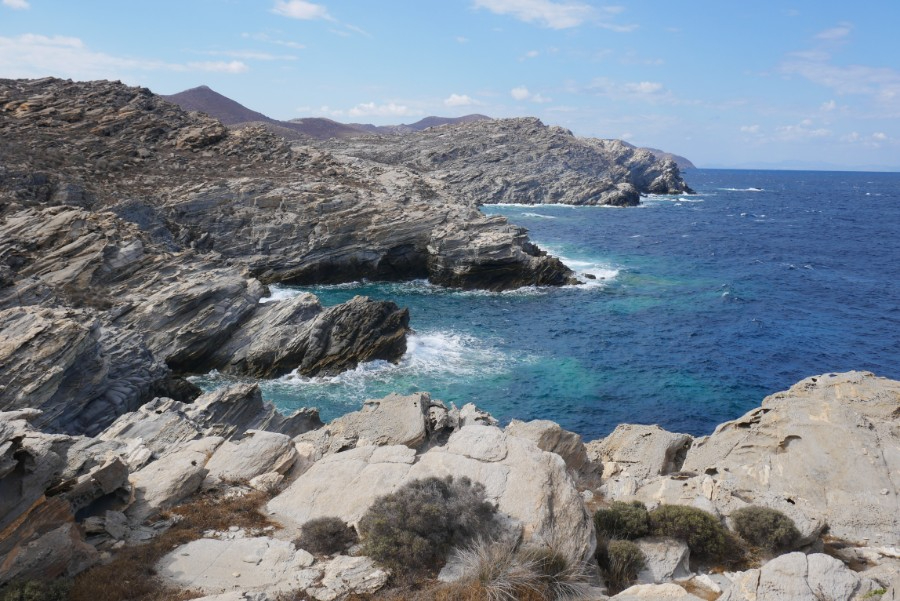
Three hiking trails lace through the 80 hectare park, offering views of its natural and cultural attractions. The park boasts a stunning rocky landscape, pounding surf, and a photogenic lighthouse. Along its coastline, the park conceals a string of small secluded beaches.
In addition to its natural amenities, the sprawling nature park contains an outdoor amphitheater (host to festivals and events throughout the summer), and an open-air cinema.
PAROS BEACHES
We didn’t spend much time at the beach during our stay in Paros. Since we’d already gotten our dose of sand and sea at the lovely Plaka Beach in Naxos, we chose to focus on the island’s other attractions instead.
It was clear to us, however, that there are plenty of wonderful beaches in Paros. Some of the island’s beaches are organized and crowded, while others appeal to those seeking quiet and seclusion.
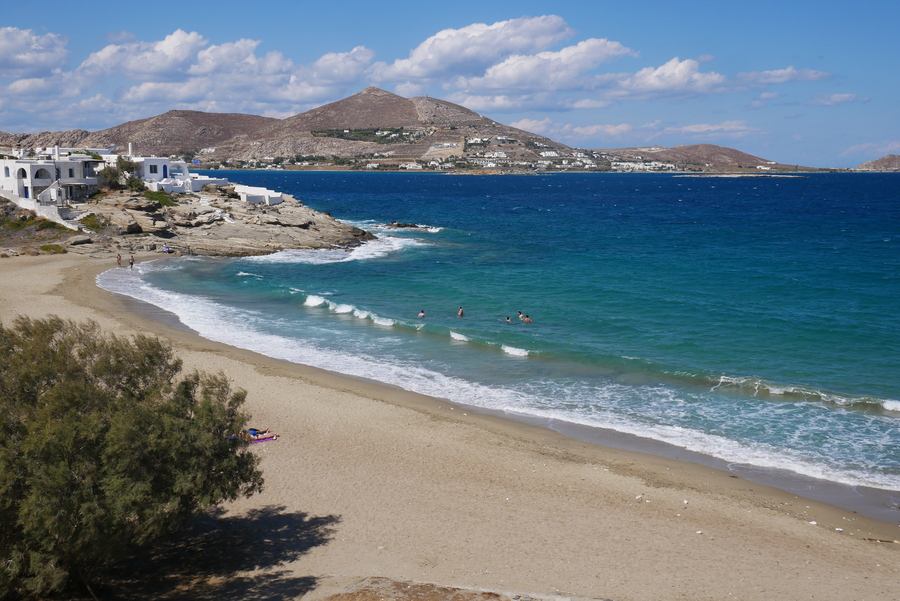
The island’s most famous beach is Kolymbithres—a stretch of sand defined by its sculpted rock formations. Other popular beaches include Golden Beach (famous for windsurfing) and Santa Maria Beach.
ANTIPAROS ISLAND
Easily accessible from Paros with or without a car, Antiparos Island makes for a perfect side-trip. While still touristy, Antiparos offers a relaxed atmosphere that is supremely “chill.”
It is no wonder that celebrities like Tom Hanks and Madonna are known to frequently visit this small Aegean island in order to decompress.
-
ANTIPAROS TOWN
Ferries from Paros arrive in Antiparos every couple hours.
Antiparos Town lies at the northern edge of the island. It is the island’s main tourism and transportation hub. Only steps from the port are the ruins of a 15th-century Venetian castle, built to defend the island from pirates. So little remains of the castle, however, that Dan and I could hardly discern what we were looking at.
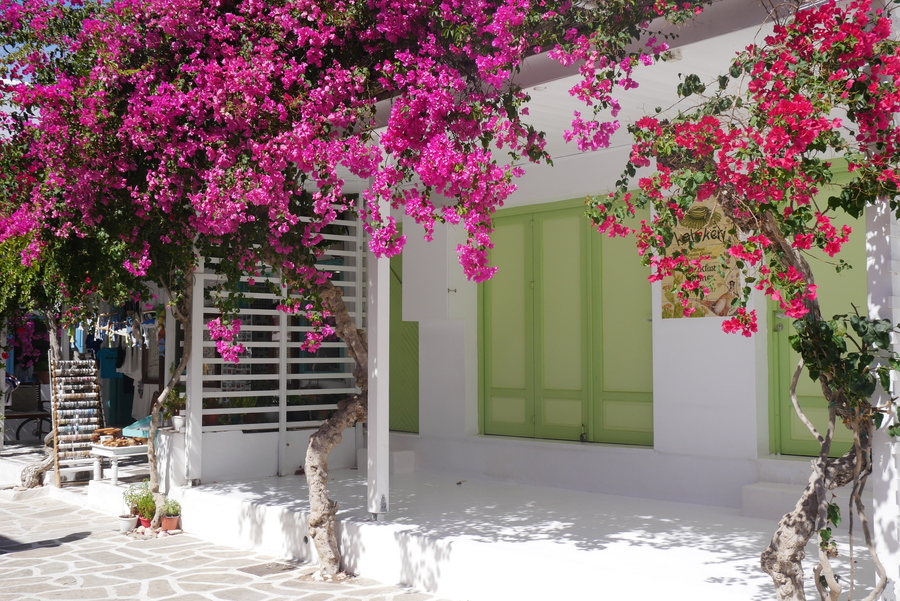
Aside from its ruined castle, Antiparos Town doesn’t contain much in particular to see.
However, in true Cycladic style, its flower-clad whitewashed architecture makes for a beautiful backdrop.
-
THE CAVE OF ANTIPAROS
The Cave of Antiparos is a stalagmite-and-stalactite-filled cavern that ranks among the best and oldest in Europe. The entrance to the cave is guarded by a small 18th century church called Agios loannis Spiliotis.
I’ll admit that—at least in terms of sheer natural beauty—we found it tempting to compare the cave with the stunning Grotte di Frasassi that we had visited just a week prior.
Though the Antiparos Cave’s underground formations abound, it is hard to ignore the visible human-caused damage. Some stalactites have been broken off and shipped to museums abroad, others have stopped growing due to oils from prodding hands.
Still, the cave contains some impressive formations, including one that is deemed to be the oldest in Europe.
Geology aside, the Cave of Antiparos is notable for its historical importance. As you descend 85 meters down the steep staircase into the heart of the cavern, you’ll pass inscriptions—many of which are centuries old. These inscriptions serve as an unofficial guestbook documenting the cave’s visitors throughout history. Etched in the stalagmites, you can find an autograph from King Otto of Austria, as well as numerous signatures dating as far back as the 1600s.
-
ANTIPAROS BEACHES
While Paros has some lovely beaches, many people prefer the beaches in Antiparos. Judging from the ocean views along the way to the grotto, I can see why.
We spent a lovely hour or so at Paralia Psaraliki following our visit to the Antiparos Cave. Unfortunately, our half-day trip to Antiparos did not give us much time to scope out the other lauded beaches on the island.
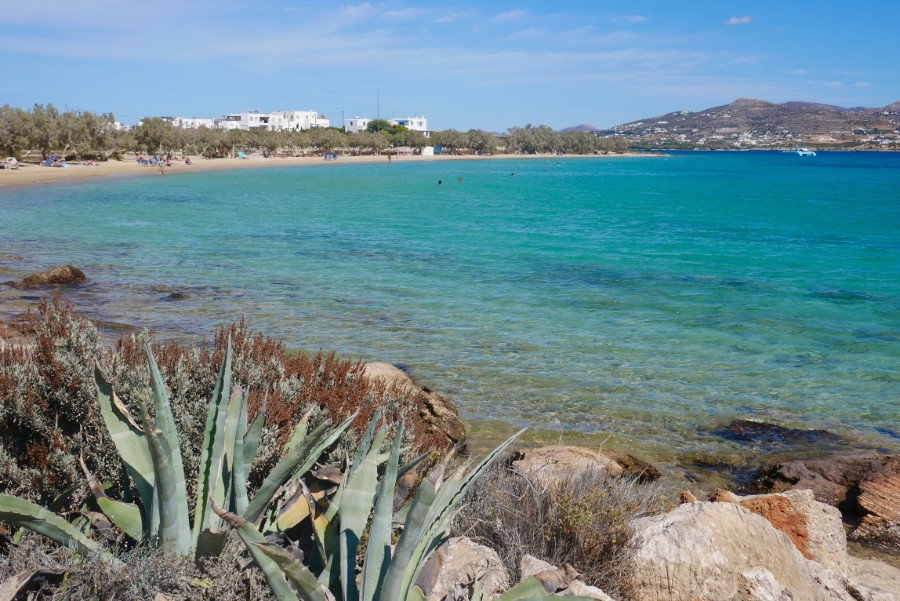
If you’ve got more than a half day to explore the island, you may want to check out one of the island’s other idyllic beaches. From my understanding, Faneromeni Beach, Panagia Beach, Soros Beach, Glyfa Beach and Vathis Volos Beach contain the island’s most notable stretches of sand.
WHERE TO STAY IN PAROS (AND ANTIPAROS)
There are a variety of wonderful places to stay in Paros that cater to different budgets.
During our stay in Paros, my family and I rented out budget rooms at the Margarita Studios. The small yet comfortable rooms contained everything we needed at an unbeatable price point. The Parikia Nautilus Apartments-Suites offer another budget option.
For mid-range accommodation, the Alexandros Studios in Nouassa come highly reviewed. And if you’re looking for more of a splurge, the Kallisti Paros in Nouassa seems wonderful.
Antiparos is a bit more limited in terms of accommodation. If you’re looking to stay on the island overnight, the Artemis Hotel seems low-key, well-rated, and affordable.
WHEN TO VISIT PAROS
During the three summer months of June-August, hot sunny weather brings throngs of visitors to Paros. While I imagine that peak season crowds are a lot more manageable than in Santorini, I still recommend visiting during shoulder season.
The best time to visit Paros is during the months of May and September. During these off-peak months, visitors can enjoy nice weather, quieter beaches, and better deals on accommodation.
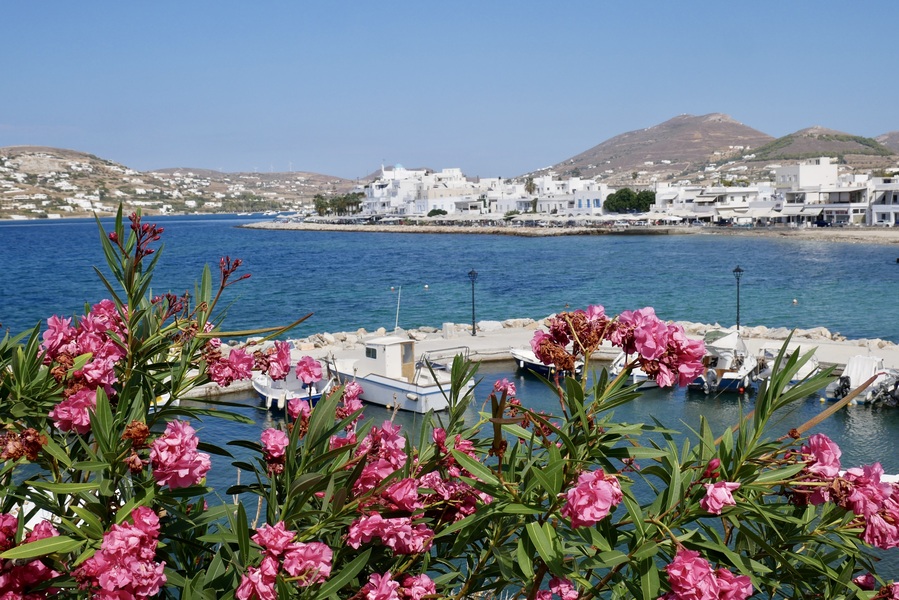
My family and I visited in late September. The weather was gorgeous, crowds were manageable, and we found it quite easy to travel around without prior reservations.
GETTING TO PAROS
Paros connects with the rest of Greece by boat and plane. Frequent ferry connections link the island with other destinations in the Cyclades—including Santorini, Ios, Naxos, and Milos. You can find details and timetables at Ferryhopper.com
We took a ferry to Paros from Naxos and had no difficulty booking last minute.
Travelers coming from Athens or Thessaloniki also have the option of reaching Paros by plane on Olympic Air or Sky Express.
****
The pretty island of Paros draws travelers to its chalk-white cities, its bucolic rural villages and crystal clear waters.
While it has garnered attention in recent years, the island manages to maintain its charm by embracing tourism, while eschewing overdevelopment. Paros has struck a fine balance. But I fear that is only a matter of time before droves of tourists descend on the island and disrupt its equilibrium.
For now, the island remains lively and amenity-filled, yet simultaneously peaceful and rooted in tradition.
I totally understand why Paros is voted “Best in Europe” time and time again.
_________
DID YOU ENJOY THIS GUIDE TO PAROS AND ANTIPAROS? PIN IT!
